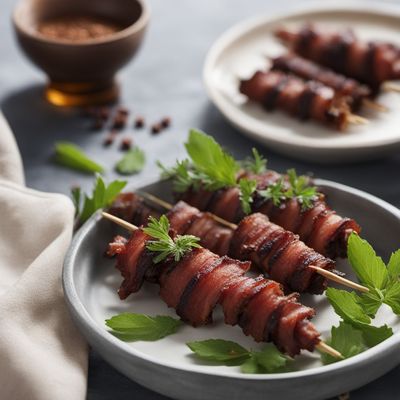
Ingredient
Dates
"Nature's Sweet Gems: Exploring the Delights of Dates"
Dates are small, oval-shaped fruits with a wrinkled, brownish-black skin. They have a soft, chewy texture and a sweet, caramel-like taste. The flesh of dates is sticky and moist, while the skin provides a slight chewiness. These fruits are often enjoyed fresh or dried, and their natural sweetness makes them a popular choice for adding flavor and depth to both sweet and savory dishes.
Origins and history
Dates have a long and illustrious history, with their origins dating back thousands of years to the Middle East. They have been cultivated in the region for over 6,000 years and were highly valued by ancient civilizations such as the Egyptians and Mesopotamians. Dates played a significant role in the diet and economy of these civilizations, and they were even considered a symbol of fertility and prosperity. Today, dates are grown in many countries around the world, including Saudi Arabia, Iran, Egypt, and the United States.
Nutritional information
Dates are a nutrient-dense fruit, packed with essential vitamins and minerals. They are a good source of dietary fiber, potassium, magnesium, and antioxidants. Additionally, dates provide natural sugars and are relatively high in calories, making them a great energy-boosting snack.
How to select
When selecting dates, look for plump and glossy fruits that are evenly colored. Avoid dates that appear dry, shriveled, or have moldy spots. Fresh dates should have a slightly soft texture, while dried dates should be firm but not overly hard.
Storage recommendations
To maintain the freshness and quality of dates, store them in an airtight container or resealable bag in a cool, dry place. Dried dates can be stored at room temperature for several months, while fresh dates should be refrigerated and consumed within a few weeks.
How to produce
Dates are typically grown on palm trees, specifically the date palm. Growing date palms requires a warm climate, well-drained soil, and plenty of sunlight. While it may not be feasible for amateurs to grow date palms, they can be grown in certain regions with suitable conditions.
Preparation tips
Dates can be enjoyed in various ways. Fresh dates can be eaten as is, or they can be stuffed with ingredients like nuts or cheese for a delicious appetizer. Dried dates are commonly used in baking, desserts, and as a natural sweetener in smoothies or energy bars. They can also be chopped and added to salads, couscous, or tagines for a touch of sweetness.
Culinary uses
Dates are widely used in Middle Eastern and North African cuisines, where they are incorporated into both sweet and savory dishes. They are commonly used in desserts like sticky toffee pudding, date squares, and date-filled pastries. Dates can also be blended into smoothies, used as a natural sweetener in sauces or dressings, or added to meat dishes for a hint of sweetness.
Availability
Dates are commonly available in Middle Eastern countries, such as Saudi Arabia, Iran, and Egypt. They are also cultivated in California and Arizona in the United States.

